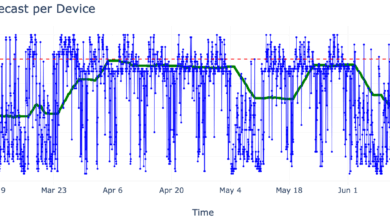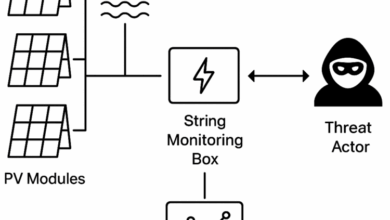Achieving PCI DSS v4.0.1 Certification: A Comprehensive Overview of Cato Networks’ PCI Journey
Executive Summary
As previously noted, we achieved PCI DSS v4.0.1 compliance certification, becoming the first SASE platform provider to do so. This milestone reflects our commitment to the highest security standards, ensuring enhanced protection for sensitive data. Throughout the assessment, we collaborated with an external Qualified Security Assessor (QSA) from USD AG to ensure all requirements were thoroughly evaluated. The final report confirmed that our SASE platform is fully compliant with all applicable PCI DSS v4.0.1 requirements.
While compliance certification usually takes over a year, we completed it in just a few months. Like renovating an apartment, what initially seemed straightforward revealed deeper complexities as we worked through each requirement. Despite these challenges, we successfully integrated and aligned every aspect of security and compliance in record time.
In the following sections, we will outline the methodology, key differences between PCI DSS v4.0.1 and previous versions, how our cloud-native approach simplified the compliance process, the technical challenges we overcame, and how we met each applicable PCI DSS requirement through robust security measures and thorough validation processes.
PCI DSS v4.0.1 Compliance and How We Met Key Applicable Requirements
Table 1 summarizes our journey to achieving PCI DSS v4.0.1 certification, highlighting the key requirements applicable to us and how each was carefully met through robust security measures and thorough validation processes.
Table 1: Summary of PCI DSS v4.0.1 Compliance and How We Met Key Applicable Requirements
Key Differences Between PCI DSS v4.0.1 and Previous Versions
PCI DSS v4.0.1 introduces updates that make the framework more flexible and aligned with modern security practices. It offers more options for achieving the same goals—such as improving encryption, key management, and multifactor authentication—while strengthening areas like risk management, third-party security, and supply chain risks. It also adds requirements for testing, monitoring, and documentation, and better aligns with other cybersecurity standards, providing a longer transition period for compliance. For service providers, these updates ensure that third-party providers meet the latest PCI DSS requirements, enhancing data protection controls.
Cloud-Native Architecture for PCI DSS v4.0.1 Compliance
At first glance, the objective seemed straightforward, but as we integrated networking and security functions, it became clear that everything had to work seamlessly to meet PCI DSS v4.0.1 requirements. From the start, the SASE platform was designed with integration in mind, unifying these functions into a cohesive system, which made it easier to ensure compliance.
With over 85 Points of Presence (PoPs) connected via a global private backbone, traffic flows through our Single Pass Cloud Engine (SPACE), applying critical security policies like firewalls and intrusion prevention. Our global EKS environment orchestrates containerized services, while load balancers, switches, and routers manage dynamic routing for optimal performance and availability. Just like in a renovation, where each decision impacts the whole space, this cloud-native architecture ensures scalability, high availability, and self-healing capabilities. Continuous monitoring and analytics protect sensitive data and provide instant anomaly detection, ensuring compliance while offering flexibility and resilience as the network evolves.
Review of Sampling Methodology and System Administration Practices
At the start of our PCI DSS v4.0.1 compliance journey, we developed a rational sampling methodology in collaboration with our lead QSA assessor to ensure the samples accurately represented the various components of our system. This included systems across categories such as operating systems, firewalls, routers, cloud service management consoles, workstations, SIEM, development tools, and all critical components of the Cato SASE Cloud Platform, such as PoPs, production servers, and security infrastructure. The sample sizes were large enough to provide confidence that all systems within each group were configured consistently and adhered to the same security standards.
Much like a renovation where every room must be evaluated and updated according to specific needs, we thoroughly reviewed processes and procedures through documentation, interviews with key personnel, and analysis of change tickets. This comprehensive review confirmed that systems were configured and administered according to standardized procedures and defined configuration standards, ensuring the environment was both secure and aligned with compliance requirements.
Security, Compliance and Privacy Center | Take a look
Examples of Technical Challenges We Overcame
Let’s dive deeper into the various technical challenges we faced while ensuring hardening, providing evidence throughout the certification process, and continuously securing our SASE environment. The story of our process highlights how seemingly simple tasks can lead to unexpected complications, requiring an evolving strategy that integrates automation, continuous hardening, creativity, and sometimes thoughtful compensating controls. Using the analogy of a renovated apartment: at first, you expect the process to be straightforward, but once you start, you realize there are more layers to consider, and every step forward unveils something else that needs attention. Here are some examples of how we overcame each challenge and improved the system in a highly automated, technically sound way.
Security and Monitoring Integration and Automation
When it came to monitoring the integrity of critical configuration files and systems, we integrated a third-party cloud security tool with our existing monitoring solutions to automatically alert us whenever anomalies were detected. This wasn’t as simple as just installing the tool and moving on; we had to ensure the alerts were meaningful and led to swift action. We implemented file integrity monitoring (FIM) to closely track changes to vital files, ensuring that any unusual activity would immediately trigger alerts sent to our Slack channels and team emails. This was further enhanced by implementing intelligent detection rules, such as “impossible travel” and “unfamiliar sign-in properties,” for our Secure Direct Path (SDP) clients in “Always-on” mode. This allowed us to identify dysfunctional clients in real-time and mitigate potential security risks instantly.
In addition to improving real-time alerts, we focused on automating and streamlining the monitoring process. With hundreds of systems and logs to check, it was clear that automation would be essential. We implemented automated audit log reviews and scans, significantly reducing manual oversight while improving the accuracy and speed of identifying security events. This automation empowered us to handle vast amounts of security data effectively and respond to incidents with greater agility.
Configuration Challenges
Another challenge came from managing software versions across our network. Specifically, we had to ensure that all OS versions on switches, routers, and other servers were up to date. Initially, this appeared to be a routine maintenance activity. However, we discovered that in some cases specific package updates had dependencies with critical production services and updating them immediately could potentially disrupt operations. Comparing it to the renovation analogy it was as if you planned to tear down one wall in an apartment, only to find that it’s connected to the electrical system, requiring you to bring in an electrician and rethink your approach. Rather than blindly updating systems, we engaged in detailed technical discussions to assess the risks and ensure that the updates wouldn’t negatively impact Cato’s SASE cloud platform. We also evaluated compensating controls to be implemented when needed. This process wasn’t just about patching; it was about evaluating the full impact of every action.
Access Control and PoP Server Hardening
Another area that required detailed attention was ensuring secure access control to our PoP servers. Using the renovation analogy, it was like starting the project and realizing that, beyond installing new cabinets, you may also need to rethink the entire layout to ensure everything fits together properly. As a result, we improved our hardening and existing security processes by implementing stringent measures to ensure that only authorized users could access these critical components, and that terminated users were immediately removed from the system. Additionally, we restricted access to specific ports to prevent unauthorized actions and minimize attack vectors. As part of our ongoing security hardening, we regularly reviewed and updated our firewall configurations to ensure that only necessary ports were open, and all configurations adhered to strict security standards. This continuous review and improvement process ensured that our PoP servers remained secure while providing operational flexibility and ongoing enhancement.
Continuous Training and Secure Development Practices
We also focused on ensuring continuous training and secure development practices for personnel responsible for tailored software, as well as all developers. We ensured that software development teams were trained at least once every year in secure software design, secure coding techniques, and the use of security testing tools to detect vulnerabilities in their code. This was crucial to ensure that any new features or changes to the SASE platform would not introduce risks. Additionally, we implemented processes to track training completion, regularly checking who had completed it and who had not.
Furthermore, we introduced a “4-eye” code review process for Terraform scripts to ensure that no developer could approve their own changes. This added an extra layer of scrutiny, ensuring that all changes underwent thorough vetting before being deployed to the production environment. This process is critical when working with Infrastructure as Code (IaC) tools like Terraform, where the risk of introducing vulnerabilities through poorly reviewed code could be significant.
Evidence Collection and Compliance Documentation
We were also asked to provide evidence for compliance with PCI DSS v4.0.1. The documentation requirements were extensive, and every configuration change, log review, or security adjustment had to be properly recorded. For example, we needed to provide evidence for key aspects such as secure development lifecycle (SDLC) processes, firewall rule changes, and the use of endpoint detection and response (EDR) solutions on administrative workstations. In some cases, this involved gathering ticket logs from various sources, such as network configuration changes, user management tickets, and security incident tickets, and ensuring that all actions were traceable and well-documented.
Additionally, we had to demonstrate that all personnel responsible for key security functions, such as incident response or firewall management, had undergone regular security training. This was accomplished by compiling records of training completion rates and aligning them with documented policies and procedures.
Achieving PCI DSS compliance required extensive collaboration across multiple teams, focusing on hardening, process improvements, testing, validation, and enhanced automation. To manage this complex process, we tracked all activities in JIRA
Figure 1 shows the list of dozens of JIRA activities we used to track the status, history, and tasks related to the PCI DSS process, which required collaboration between multiple teams. (Assigned owners and task summaries have been blurred).
Figure 1: List of JIRA Activities for PCI DSS Process Tracking
Summary
Achieving PCI DSS v4.0.1 certification marks a significant milestone for us, reinforcing our commitment to security and reliable services. Through rigorous testing and best practices, we ensured our systems were secured against threats with comprehensive measures for network security, secure configurations, user authentication, and incident response.
Like renovating an apartment, each task in securing and monitoring the SASE environment revealed new complexities. Unexpected challenges, such as configuration changes with broader impacts, were managed through creativity, strategic thinking, automation, continuous monitoring, and testing. This iterative approach allowed us to improve the system, making it adaptable and resilient while ensuring ongoing PCI DSS compliance.
The post Achieving PCI DSS v4.0.1 Certification: A Comprehensive Overview of Cato Networks’ PCI Journey appeared first on Cato Networks.



